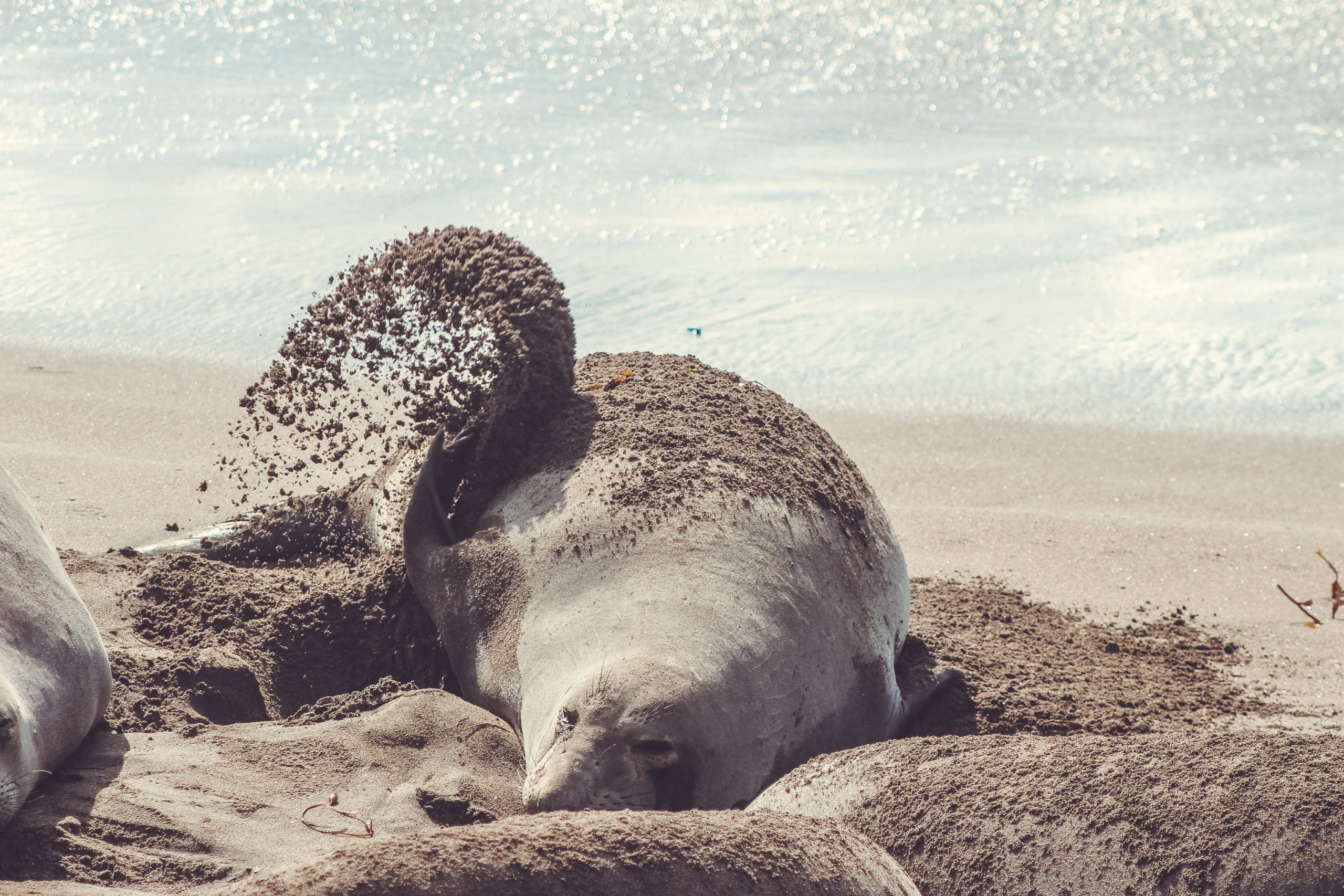
Thermoregulation
Seals control internal temperatures and reduce heat loss by a mechanism called countercurrent heat-exchange. As an example, the arteries carrying warm blood to the hind flippers are meshed with the veins carrying cold blood. Inside this mesh, heat is transferred from the arteries to the veins, moving heat to the returning blood rather than losing it to the ocean.
At times, the problem on land is removing excess heat from the body. This is accomplished in a number of ways, most prominent being by flipping the cool moist sand onto the body, cooling by contact and by evaporation. The seals will also from time to time raise a front flipper. There is very little blubber insulation in the “arm pit” and the blood flow is near the surface there, allowing efficient cooling. The seals will often line up along the water’s edge and use the cool wet sand as another means of releasing excess body heat.


